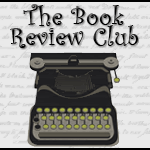I was in the Creative Nonfiction workshop at the Summer Writer's Institute. There's often confusion about what, exactly, Creative Nonfiction is.
"If it's creative, how is it nonfiction?"
Our workshop leader, Kathleen Finneran, explained to us that the "creative" part comes in how you tell your story and in the writing itself. Does your life story look like an encyclopedia entry, just a straightforward listing of facts? Or can you pick important episodes from different parts of your life, and, juxtaposing them, create an even more compelling narrative?
Creative Nonfiction doesn't have to be memoir. The genre comprises essays, opinion pieces, blogs, biography, autobiography, food writing, travel writing, oral history, reviews, literary journalism, and on and on.
Basically, Creative Nonfiction is anything that tells a good and interesting story, while still being true. The creative part refers to the way the story is structured and to its writing, not its veracity.
Different authors draw the line in different places, of course. Some stretch the truth to tell a better story. Some lie. There are not yet any hard-and-fast rules for the genre. The current thinking is that as long as you're honest about what liberties you've taken, then you're OK.
Finneran published an essay called Lying in the Land of Memoir: straddling the Line Between Fact and Fiction suggesting that there are three acceptable ways to bend the line between fact and fiction:
1) Make up dialogue: but carefully. The writer must remember that the conversation really took place, have some memory of what was discussed, and how the conversation ended. Then she (or he) can carefully recreate the conversation as closely as possible to how it probably occurred.
2) Conflate time: gently. Perhaps something that really took place over two nights looks like it took place in only one night in the piece, so that the narrative flows better. Personally, I'm a little uncomfortable with this one.
3) Leave stuff out. Well, duh. It boggles my mind that people cry, "That's not what really happened!" just because the writer doesn't mention that Jim Bob was also in the room. I mean, perhaps Jim Bob isn't really a major character in this story, he didn't contribute anything meaningful, so it would just be confusing to bring him up for no apparent reason. In a history textbook, the author would mention that he was standing silently in the corner all night. In Creative Nonfiction, the author has the freedom to choose whether or not his presence is significant.
Other authors take much greater liberties. In her "memoir," Bitter is the New Black, Jen Lancaster admits that she has left out the names of places she worked, changed the names of the characters, altered the timeline to move the story along, and combined some characters together, all in a story about how long she was unemployed and why. That, in my opinion, is a thinly fictionalized novel, based heavily upon the author's own experiences. Ditto with James Frey's A Million Little Pieces.
Ira Sukrungruang also takes liberties in his (fun!) creative nonfiction. One scene in his first memoir is bookended with what's happening on The Crocodile Hunter on TV. The TV was on, Animal Planet was on, The Crocodile Hunter was on. But he doesn't really remember exactly what was happening in the show while he was having this particular conversation with his mother; he filled in the details to bring the story to life. That, too, is further than I'm willing to bend the truth, but I respect that he's honest about what he's done.
So, that's creative nonfiction, and I guess I'll write about Kathleen Finneran and the workshop participants tomorrow.
New Release Spotlight: Jonathan P. Walton
-
Congratulations to author Jonathan P. Walton on the release of the new
book, BEAUTY AND RESISTANCE. Through personal narrative and practical
guidance, Wa...
2 weeks ago





No comments:
Post a Comment